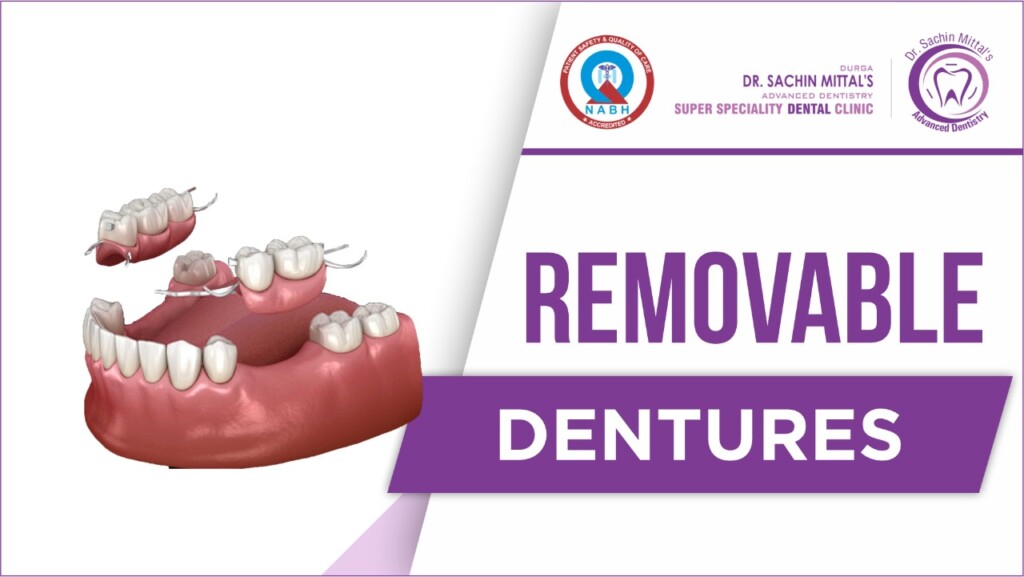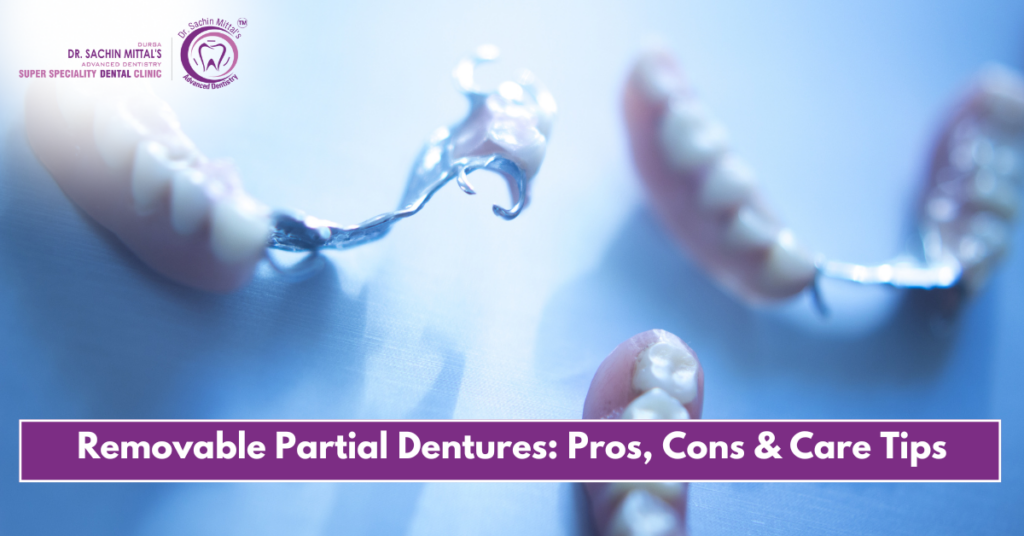Dental implants, fixed bridgework, and removable partial dentures are the most frequent tooth replacement alternatives for those who are missing one or more teeth (RPDs).
RPD prevents your existing teeth from shifting, and improves the appearance of your smile, depending on your demands.

REMOVABLE PARTIAL DENTURES – PROS AND CONS
If you’re missing one or more teeth you most commonly have three options for tooth replacement: dental implants, fixed bridgework, and removable partial dentures (RPDs).
- According to customer needs, all three options will help you function more normally (chewing and talking), prevent your existing teeth from shifting, and improve the look of your smile.
- RPDs may be a viable alternative, either long-term or as a temporary remedy, depending on your needs and desires. Let’s take a look at the many types of partial dentures, some of the benefits and drawbacks of each, and how to care for your mouth with partial dentures to avoid future tooth loss.
- Partial dentures are custom-made from models of your mouth and consist of a resin base into which prosthetic teeth are put. A temporary partial, often known as a flipper, is used to replace teeth immediately after extraction, ensuring that you never go without one. It’s mostly for aesthetic reasons, and it usually doesn’t work effectively.
- Because a flipper is fully supported by your gums, you should be mindful of any irritation or thinning of your soft tissues.
- Flippers are best utilized temporarily while the extraction site heals and until a more permanent tooth replacement solution is implemented.
- Traditional detachable partial dentures replace one or more missing teeth and may include clasps that hold the dentures to healthy abutment teeth. Clasps can be fashioned of a less apparent resin substance or metal, which is occasionally used as part of a metal framework that runs the length of the partial.
- To correctly distribute your biting forces, prevent stress to your gums and natural teeth, and look and operate as normally as possible, the fit of your partial is critical.
RPDs are less intrusive and less expensive than alternative tooth replacement treatments for people with numerous missing teeth.
Additional teeth may be added to the partial over time, depending on the material used and other considerations.
If some natural teeth can be salvaged, partials are a far better option than a complete denture for replacing missing teeth in the lower jaw. A removable complete lower denture is difficult for most people to adjust to.
Disadvantages of Removable Partial Dentures
It takes some time to adjust to having a partial in your mouth.
RPDs can cause plaque to build up around the abutment teeth, resulting in tooth decay (caries) and gum disease.
Pressure or displacement of the partial might cause trauma to the abutment teeth or gums.
Caring for Your Mouth with Partial Dentures.
- At night, they must be removed.
- Every night, remove your partial to relieve your teeth and tissues. To stay healthy, your gums require oxygen and proper blood circulation.
- To remove more plaque from your natural teeth, use a power toothbrush.
- Flossing is essential, particularly around your abutment teeth.
- Use toothpaste and a gentle brush to clean your partial dentures, or use denture cleaning pills.
- Place your partial in your mouth and place it in your mouth with your fingers rather than biting it. Biting the clasps puts a strain on them and can cause them to break.
- Be aware of the increased risk of dental decay by avoiding sweetened beverages and high-sugar foods.
- Continue to see your dentist for cleanings and exams on a regular basis to keep your mouth healthy.
- If you’re considering removable partial dentures, ask your dentist for a comprehensive examination to look at the health of all your teeth.
- Explore all of your options for tooth replacement and for keeping your existing teeth as healthy as possible. Dr. Sachin Advanced Dentistry for Comprehensive Care is your nearest best partial dentures dentist.

